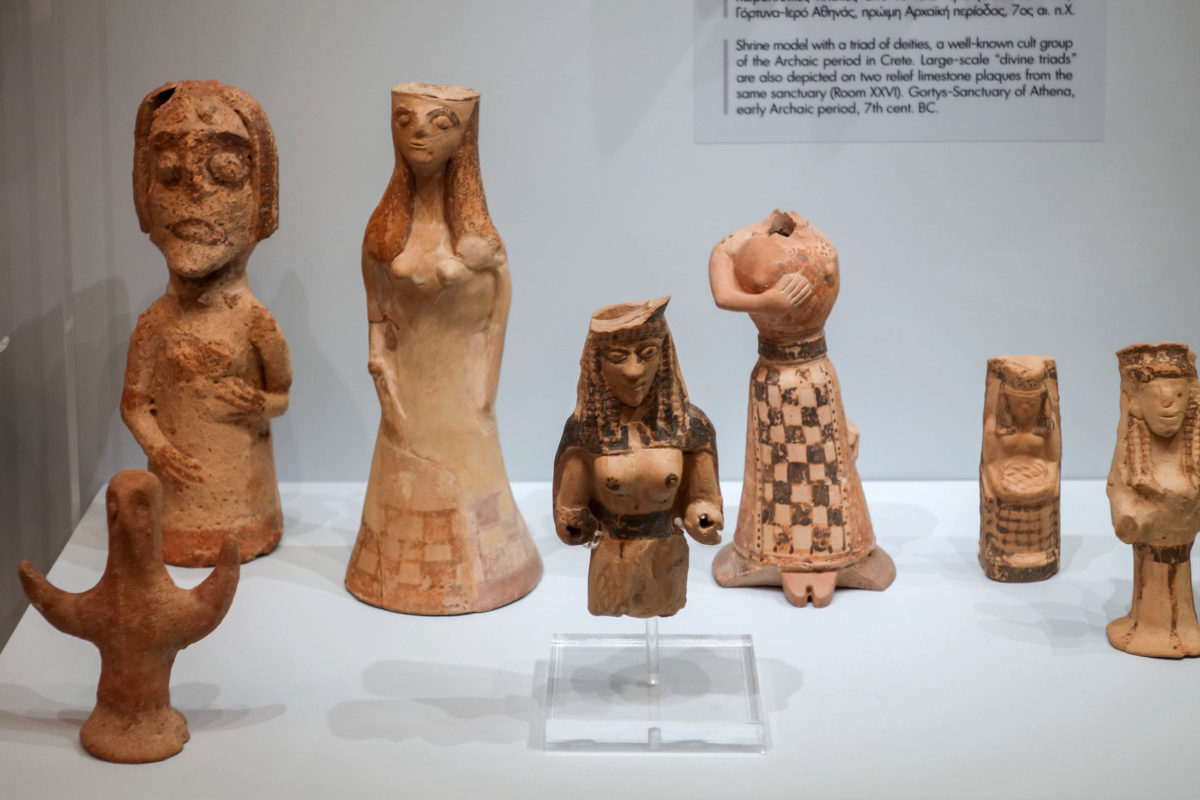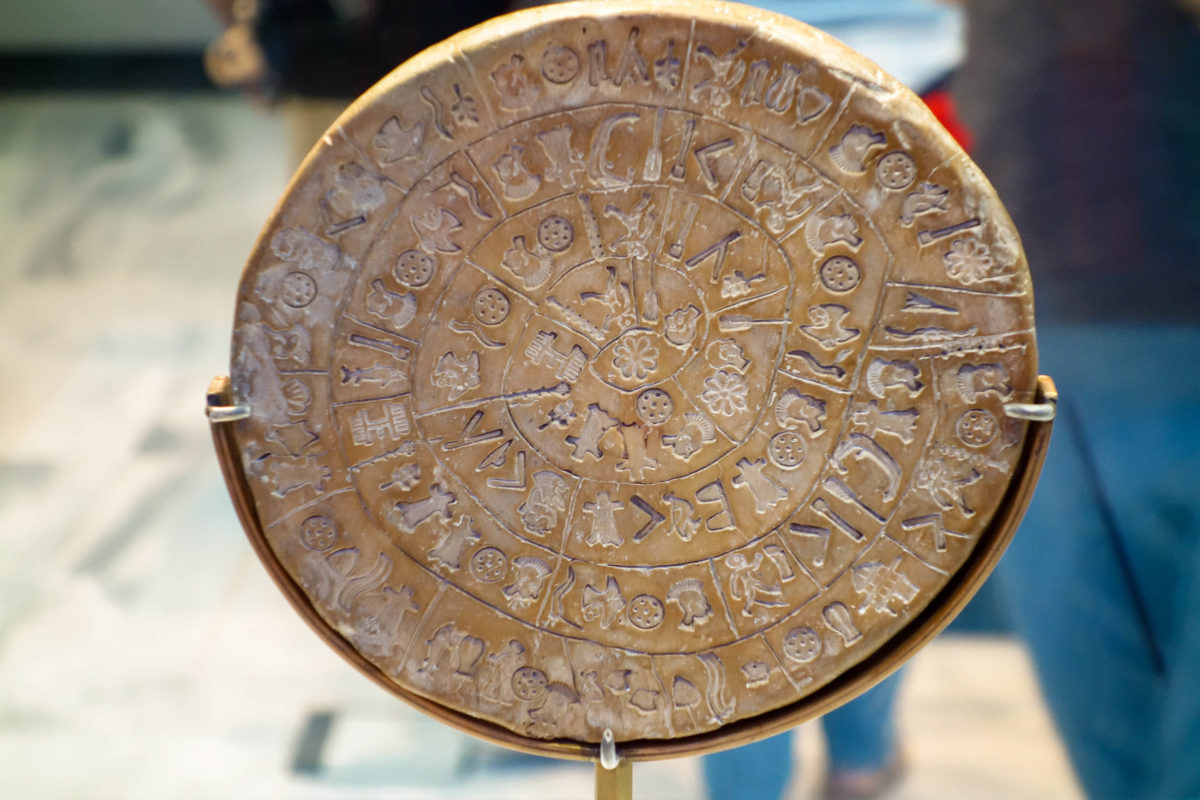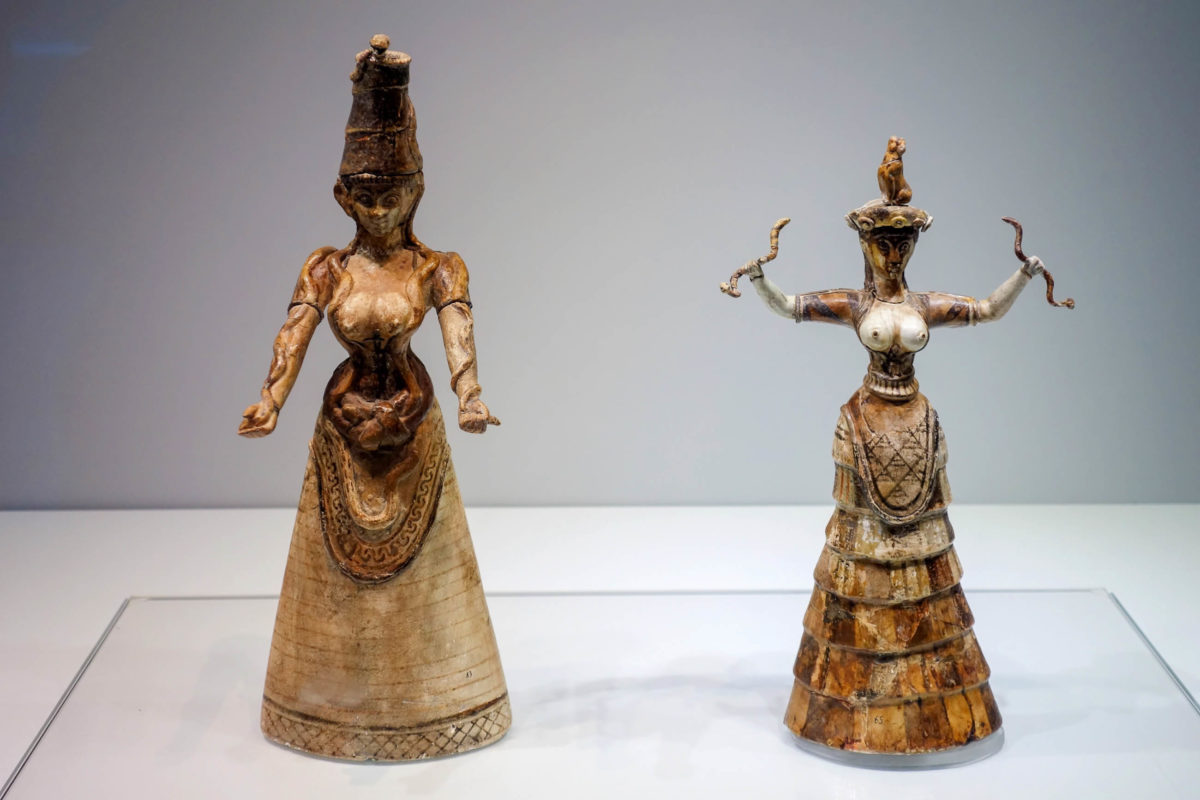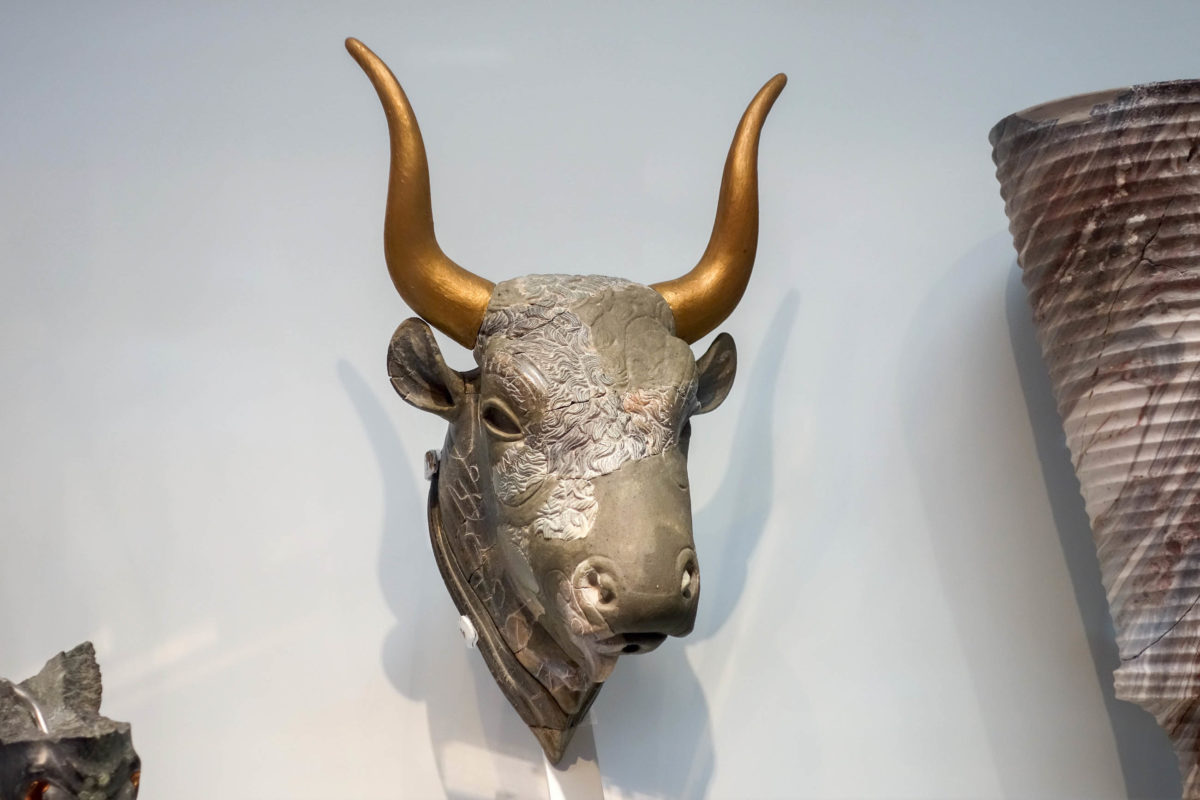Das Archäologische Museum in Kretas Hauptstadt Heraklion zählt zu den wichtigsten Museen Europas und präsentiert vor allem faszinierende Schätze der Minoer, Europas ältester Hochkultur.
Wer sich für die griechische Geschichte interessiert, muss im Kreta-Urlaub das Archäologische Museum in der Hauptstadt Heraklion unbedingt in seine Urlaubsplanung aufnehmen.
Neben den berühmten Ruinen von Knossos, die vom Palast des legendären Königs Minos übrig sind, ist das Archäologische Museum Iraklio nach dem Nationalmuseum in Athen Griechenlands wichtigste Sammlung antiker Artefakte. Es gehört zu unseren Top 10 Sehenswürdigkeiten von Kreta und den Top 10 Sehenswürdigkeiten von Griechenland.
Inhaltsverzeichnis
BILDER: Archäologisches Nationalmuseum auf Kreta
Fotogalerie: Archäologisches Nationalmuseum auf Kreta
Das Museum liegt am Freiheitsplatz in der historischen Altstadt von Heraklion und wurde von 1937 bis 1940 auf den Grundmauern eines Franziskaner-Klosters errichtet, welches 1856 einem Erdbeben zum Opfer fiel. 2007 wurde das vom Architekten Patroklos Karantinos gestaltete Museum einer umfassenden Renovierung unterzogen. Im Mai 2014 wurde das Museum so modern und eindrucksvoll wie nie zuvor wieder eröffnet und präsentiert nun 5.500 Jahre von Kretas Geschichte.
Tipp: Wer sich aus Zeitgründen zwischen dem Palast von Knossos und dem Archäologischen Nationalmuseum entscheiden muss, sollte das Museum wählen, in dem bedeutend mehr zu sehen ist!
Ausstellungen im Archäologischen Museum auf Kreta

Für einen Besuch im Archäologischen Museum auf Kreta sollten mindestens 3-4 Stunden eingeplant werden. 24 chronologisch und thematisch sortierte Säle zeigen Funde von verschiedensten kretischen und griechischen Kulturen, allen voran die Minoer, die fast ausschließlich auf Kreta lebten und als erste Hochkultur Europas gelten. Die Haupt-Fundorte der Exponate sind die archäologischen Stätten von Knossos, Phaistos, Agia Triada und Kato Zakros.

Die ältesten Exponate in Kretas Archäologischem Museum stammen aus dem 7. Jahrtausend vor Christus und sind in Saal 1 zu finden. Die jüngsten Artefakte wurden auf etwa 400 nach Christus datiert und befinden sich in Saal 20. Gegenstände, die danach bis zur Gegenwart gefunden wurden, sind im Historischen Museum in Heraklion ausgestellt.
Tipp: Am 18. Mai, dem internationalen Museumstag und am letzten September-Wochenende kann das Archäologische Museum auf Kreta kostenlos besichtigt werden.
Highlights des Archäologischen Museums Iraklio
Zu den berühmtesten Objekten im Archäologie-Museum von Kreta gehören Tongefäße mit Linearschrift, die Schnittervase aus schwarzem Speckstein, ein Eberzahnhelm, die Wandmalerei eines Stierspringers, ein Steinsarg aus Agia Triada, das Stierkopf-Rhyton und natürlich der berühmte Diskos von Phaistos und die wohl noch berühmteren Schlangengöttinnen.
Der Diskos von Phaistos (Saal III)

Die völlig unversehrt erhaltene Tonscheibe wurde in einem kleinen Raum im Phaistos-Palast entdeckt und ist auf beiden Seiten mit der minoischen Bilderschrift versehen. Die spiralförmig gedruckte Inschrift mit 45 verschiedenen Zeichen gilt als frühestes bekanntes Beispiel der Typografie. Die Bedeutung des Textes konnten die Forscher bis heute nicht enträtseln.
Die Schlangengöttinnen aus Fayence (Saal IV)

Die beiden fein gearbeiteten Schlangengöttinnen, wahrscheinlich in Form von Mutter und Tochter, zählen zu den schönsten Skulpturen, die von der minoischen Kultur gefunden wurden. Sie stammen aus der Schatzkammer des Palastes von Knossos und sind rund 4.000 Jahre alt.
Wer genau hinschaut, entdeckt nicht nur die Schlangen auf den Armen, sondern auch die opulenten traditionell minoischen Gewänder, die ausdrucksvollen Augen und den Panther als Kopfschmuck.
Das Stierkopf-Rhyton (Saal IV)

Als Rhyton bezeichnet man in der minoischen Kultur ein Trink- bzw. Spende-Gefäß. Das unglaublich naturalistisch gestaltete Stierkopf-Rhyton aus blau-schwarzem Steatit gehört eindeutig zu den schönsten Beispielen. Es beweist einmal mehr die Bedeutung des Stiers in der minoischen Kultur. Die linke Seite ist original erhalten, die rechte Seite und die vergoldeten Hörner wurden ergänzt.
Weiterführende Links:





